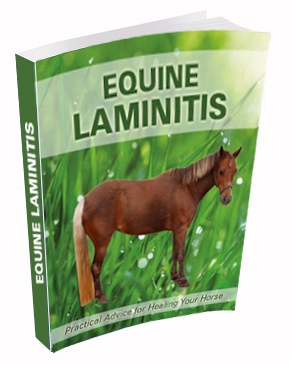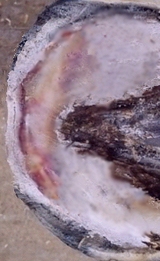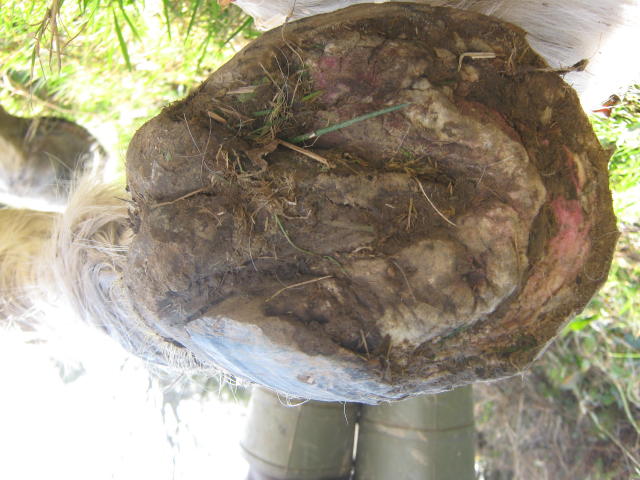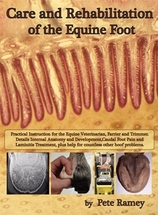| Having found that owners of laminitic horses are often overwhelmed by the amount of information available about laminitis, Jenny Edwards, creator of the excellent All Natural Horse Care website and a barefoot trimmer with more than 12 years of experience, has produced an e-book on Equine Laminitis that contains essential information in a simple to understand format with plenty of illustrations. The 38 page e-book contains chapters entitled: What is laminitis, Anatomy of the hoof, Signs & symptoms, Laminitis triggers, Pain relief, Diagnosis, Radiographs, Diet, Weight management, Hoof care, Hoof boots, Exercise and Further information, and starts with a page describing what to do if your horse is currently suffering from laminitis. |
The section on the de-rotating trim gives guidelines for re-establishing correct breakover and palmar angle and talks about preserving sole depth under the pedal bone and using the new growth beneath the coronet as a guide (although using external angles as a guide for a realigning trim is not something The Laminitis Site recommends).
Jenny has clearly had to deal with poorly taken x-rays, as she gives good advice about ensuring the hoof wall is marked to indicate the hairline at the toe, and provides a clear illustration of true and not-true lateral x-rays (the length of the thumb tacks (drawing pins) in the good x-ray is a bit scary though - TLS recommends filing the length right down or taping a coin to the frog instead). There's a very useful illustration showing the bones from an x-ray superimposed on a photo of the hoof of a pony with chronic laminitis.
The book has many similarities with the ECIR group's diagnosis, diet, trim and exercise protocol, although the ECIR group suggests that hoof mechanism should be discouraged with padding or supportive bedding. There are good suggestions for restricting grass, emphasis on basing diets on low ESC/low starch hay, an explanation about digital pulses and a guide to the Henneke body condition scoring system. Information is given about recognising and diagnosing IR (EMS) and PPID - important as around 90% of laminitis cases are likely to be due to these endocrine causes, which being systemic have the potential to affect all 4 feet - in fact in our experience laminitis in all 4 feet is as common as laminitis in just the front feet.
It is very difficult to write concisely about laminitis when there are so many variables and so much information, and this book does a good job of emphasising some of the most important points.
A small commission will be paid to The Laminitis Site for sales of the book through the link below - any funds raised will be used to fund laminitis research:





 RSS Feed
RSS Feed